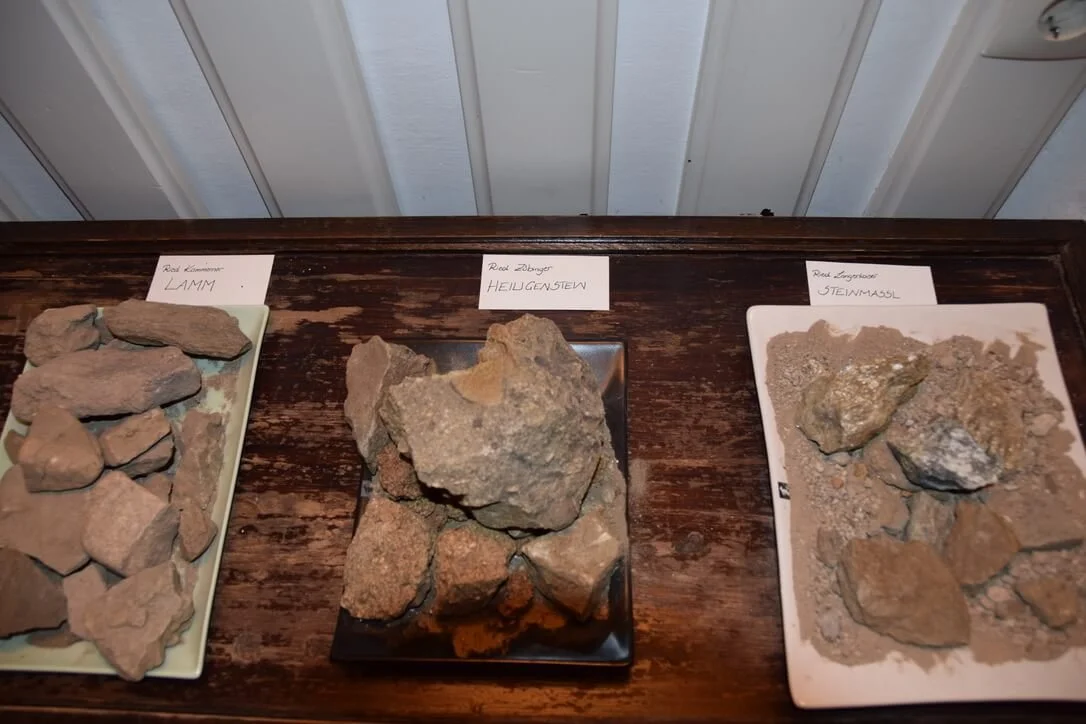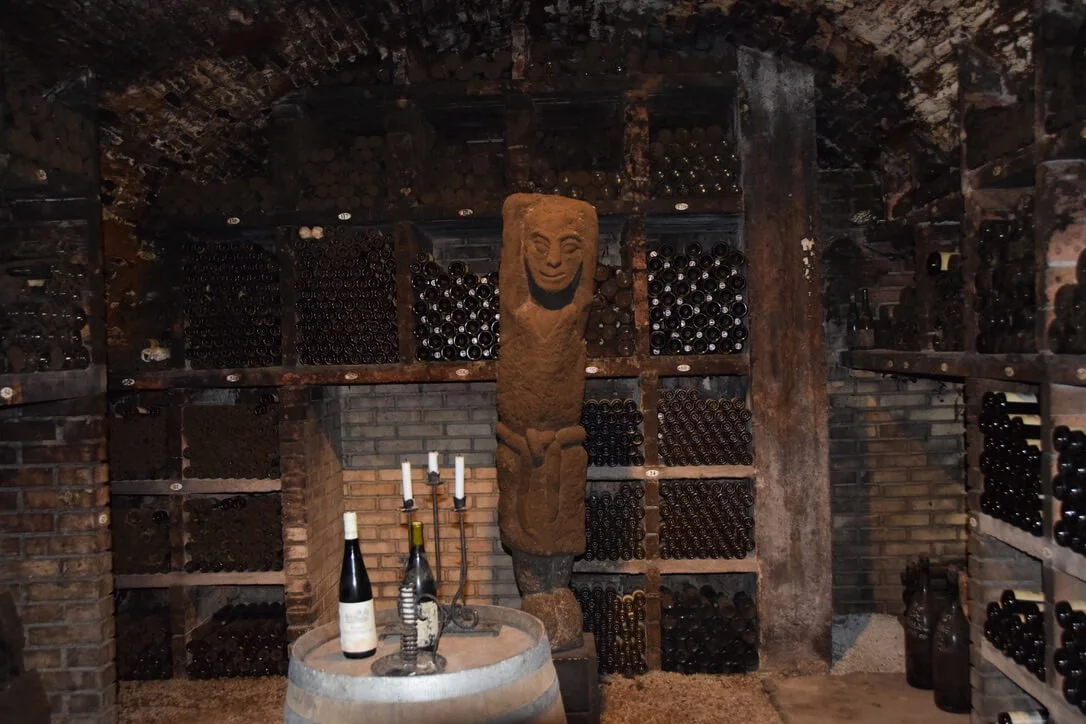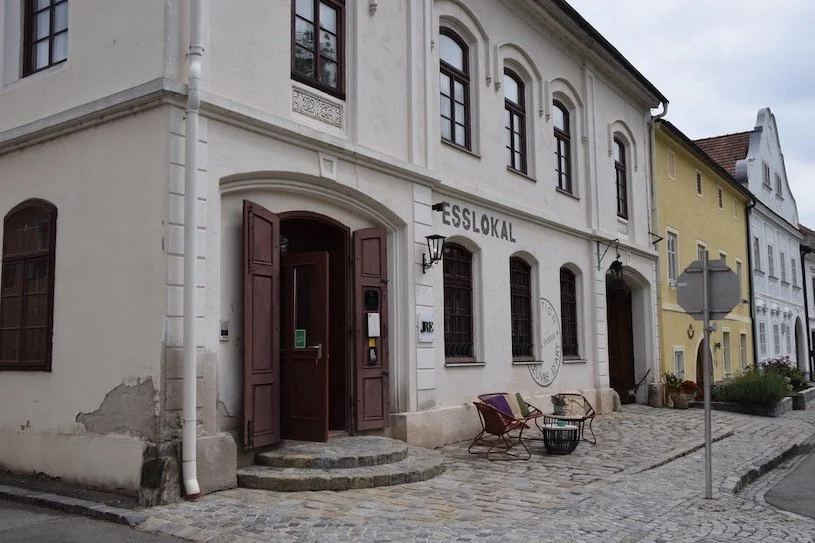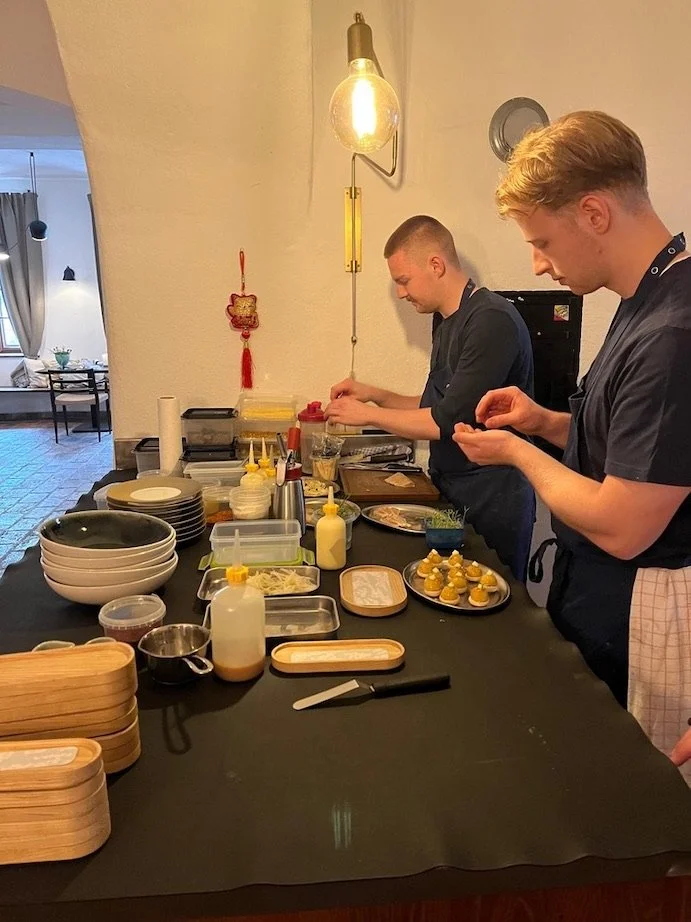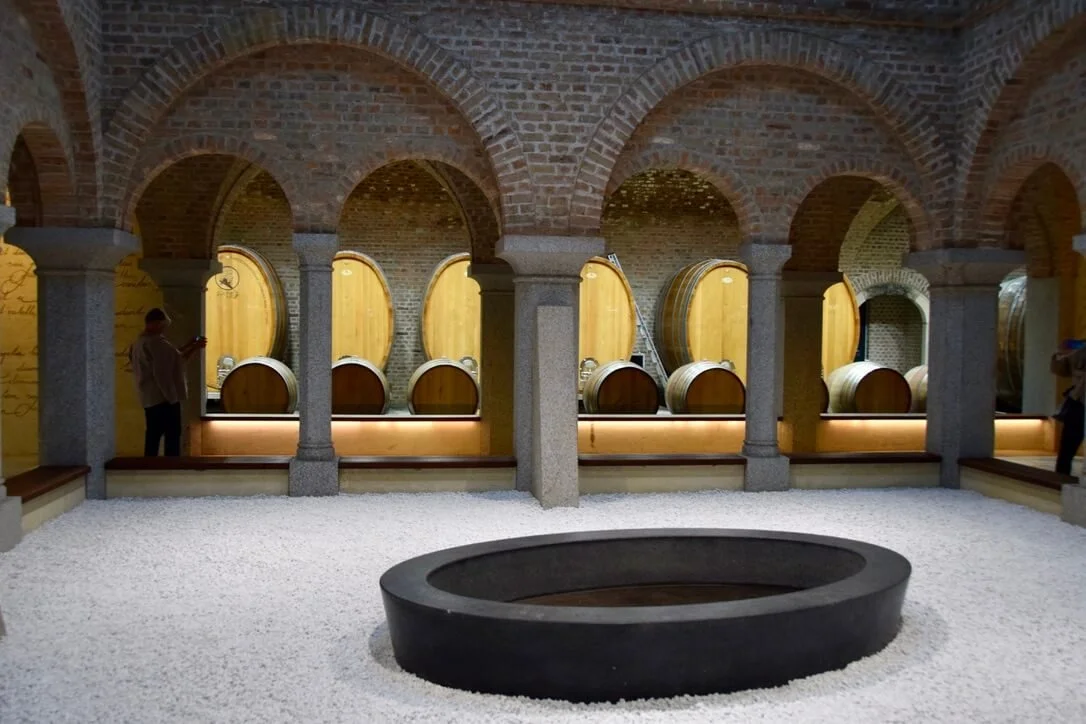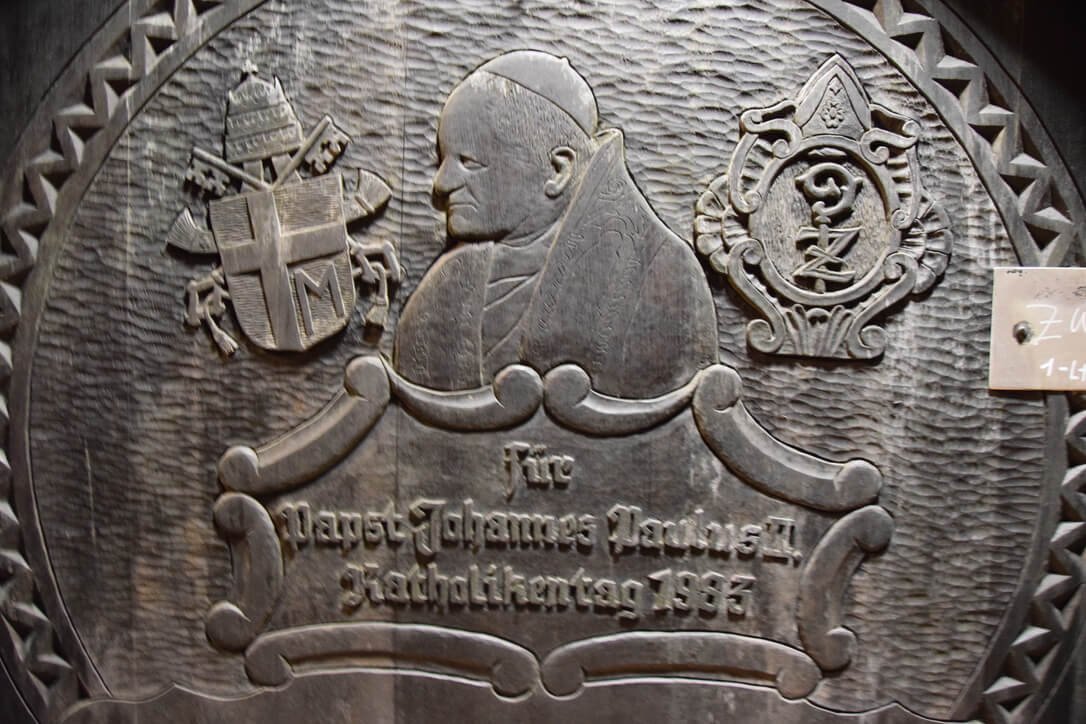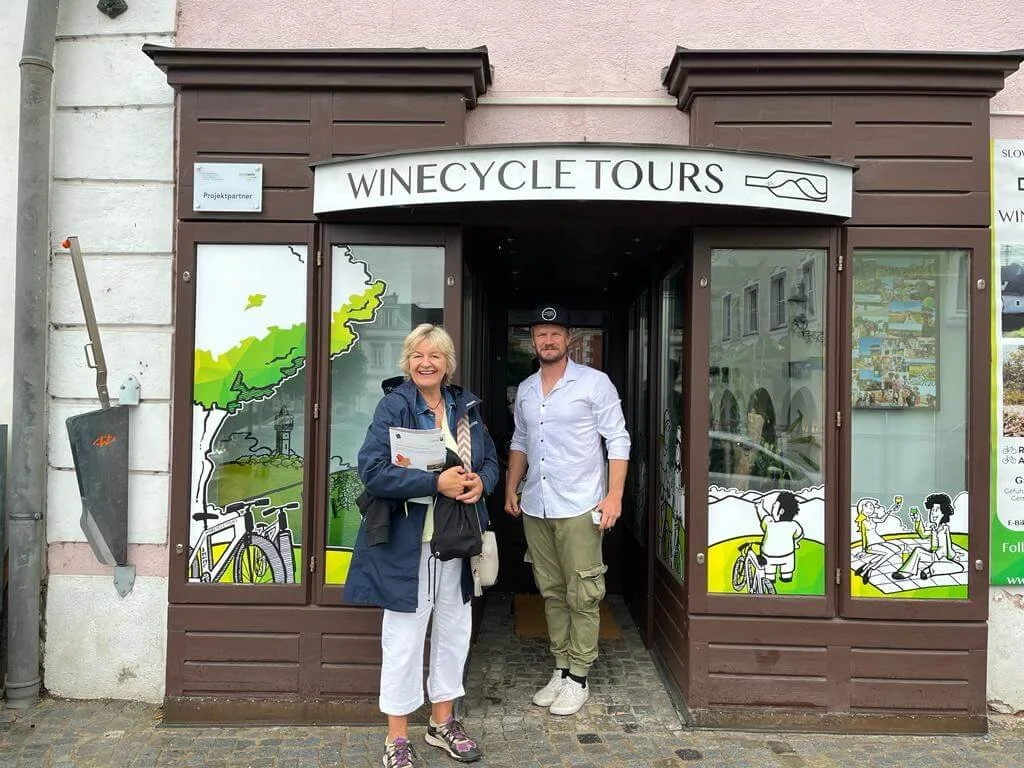Visit Kamptal Austria and enjoy an iconic food and wine experience!
Let us show you how to enjoy the best food and wine experience in Austria’s beautiful Kamptal wine region - known as the ‘valley of fine dining and good living’!
Schloss Gobelsburg, Kamptal - Source: Winekeller
The Kamptal wine region, in Lower Austria, is one of the most successful Austrian wine regions, with an unparalleled wine culture and a reputation for producing some of the best Austrian wine and food. It’s also a beautiful region to explore, with rolling meadows, woods, sheer cliffs and terraced vineyards.
Such is its wine reputation, Kamptal is home to several iconic, international, award-winning Austrian wineries, who harness the exceptional soils and terroir here to produce some stunning and world-famous wines. Here we introduce you to two of these Austrian wine icons, firstly, Weingut Bründlmayer, a Kamptal flagship winery since 1980, where you can also enjoy some of the finest food that Kamptal has to offer and secondly, Schloss Gobelsburg, with its spectacular baroque castle and ancient wine history.
The Kamptal wine region
Kamptal - the Kamp Valley - is named after the beautiful river Kamp which runs through it and into the River Danube in the south. In Lower Austria - or Niederösterreich, the Kamptal wine region lies in the Waldviertel region and more specifically in the Kamp-Manhartsberg Valley, north-east of the famous Wachau wine region and east of the Kremstal wine region.
The Kamptal wine region is known mostly for its superb Grüner veltliner wine and Riesling wine, similar to the neighbouring Wachau wine region and in acknowledgement of the quality of its wines, is known affectionately as the K2 of Austrian wine (with Wachau being Mount Everest)!
At its heart is the famous wine town of Langenlois, which lies just ten minutes away from the town of Krems, the gateway to the UNESCO World Heritage Site of Wachau and just under an hour away from Austria’s capital, Vienna.
It may be less well-known than its world-famous Wachau neighbour, but Kamptal wine packs a serious punch and its natural beauty and wine culture make Kamptal an Austrian wine region you need to discover!
Where to stay in Kamptal Austria
Our recommendation for discovering the Kamptal wine region is to base yourself in the lovely wine town of Langenlois as it’s so central to the region and to the vineyards.
The Kornplatz in beautiful Langenlois - Source: Winekeller
Langenlois has a rich wine culture and heritage and is the largest wine-producing town in Austria. The heart of Langenlois is a beautiful town square called the Kornplatz - there is a market here every Friday and head to here to learn more about the region and Kamptal wines (see later).
The Loisium Wine & Spa Hotel Resort
In the heart of the Kamptal region and indeed amongst the Langenlois vineyards, lies the LOISIUM Wine & Spa Hotel Resort - part of the group of 3 Loisium Hotels, with another in southern Austria in the South Styria region and one in Champagne in France - a brand defined by ‘modern architecture, an authentic attitude to life, inspiring wine experiences, creative cuisine and relaxed idleness.’
We have stayed with groups at the Loisium in Kamptal and can highly recommend it. The hotel is comfortable, with large, modern rooms, great facilities, an excellent restaurant (and superb wine list) and it truly is in the middle of the vineyards. You can indeed say that the LOISIUM Wine & Spa Hotel Resort offers a unique wine and wine tourism experience - see LOISIUM World of Wine later.
Here are some other ideas for where to stay in Langenlois
Weingut Bründlmayer - Langenlois
Weingut Bründlmayer is widely recognised as the ‘star wine producer’ of Langenlois. To back this up, Bründlmayer has received the "Winery of the Year" award from the American "Wine & Spirits Magazine" five times in a row, and the British "Financial Times" calls Bründlmayer a "beacon of Austrian viticulture".
We last visited Weingut Bründlmayer in May 2024 and can attest to the superb quality of Bründlmayer wines - from the lightest Grüner Veltliner wine to red wines and sparkling wines.
Weingut Bründlmayer is a family winery, led today by Willi Bründlmayer together with his wife Edwige, Thomas Klinger and Master of Wine Andreas Wickhoff. The Bründlmayer family vineyards lie on the hills around Langenlois, mostly planted in terraces and have been organically farmed since 2015.
Bründlmayer is a founding member of the ‘Österreichische Traditionsweinguter’ which is committed to expressing the characteristics of ‘terroir’ in their wines.
Bründlmayer wines - presented by Thomas Klinger - Source: Winekeller
Bründlmayer wines
The range of Bründlmayer wines includes several different varieties, but the estate's most important grape variety is Grüner Veltliner. They produce a broad spectrum of Grüner Veltliner wines, from light regional wines to complex single-vineyard reserve wines. Riesling grapes, the second most important variety, grow on barren rocky soils such as the Steinmassl and Heiligenstein vineyards (See later).
Chardonnay and the Burgundy varieties (Pinot Noir, Pinot Gris and Pinot Blanc) are also considered specialities of the estate and Bründlmayer is known for its elegant reds, especially its Pinot Noir and Cabernet Franc wines.
The Bründlmayer sparkling wine range - from Brut Reserve to Rosé - are absolutely delicious and are also highly rated and well established in top restaurants around the world.
Wine tasting at Weingut Bründlmayer
You can visit the estate wine shop to purchase wines, but wines can only be tasted by the glass in the Heurigenhof Bründlmayer, a beautiful Renaissance building dating back to the 16th century.
We can highly recommend the Heurigenhof restaurant which offers excellent local and traditional food in the evenings and also at lunchtime during weekends - note they are only open in the summer months and closed Monday-Wednesday. (There are also 3 guestrooms in the Heurigenhof Bründlmayer).
Weingut Bründlmayer doesn’t offer general winery or cellar tours - contact us to discuss how to experience these top Austrian wines.
Other places to enjoy excellent food in Kamptal
In addition to the superb Heurigenhof Bründlmayer in Langenlois, we can recommend ‘Das Esslokal’ in Hadersdorf. We enjoyed an amazing dining experience here in May 2024, with superb food and of course wines!
Here are some other options for where to eat in Kamptal.
Schloss Gobelsburg - the oldest winery in the Danube area
The wine village of Gobelsburg is located just outside of Langenlois nestled in the hills of the Kamp valley and it is known for its spectacular castle and ancient wine history.
Weingut Schloss Gobelsburg is the oldest winery in the Danube area but is also today one of the most modern, with an excellent reputation for its wines. A visit to Schloss Gobelsburg is like taking a deep dive into Austrian wine history - simply put, it is a national wine treasure. Schloss Gobelsburg is also in the top 100 list of the ‘World’s Best Vineyards’ 2024’ to visit.
Schloss Gobelsburg, Kamptal
Schloss Gobelsburg - a brief history
Records confirm that vineyards here were granted to the Cistercian monks of Stift Zwettl in 1171 - and a Schloss Gobelsburg is mentioned as long ago as 1178. The Renaissance structure at the base of the current facade of the castle was renovated in Baroque style in 1725 and the castle and land were sold to the monks in 1740. The baroque cellars of the castle were then established as the central cellar facility of the monastic estate.
Fast forward a few centuries and in 1996, current executives, Eva and Michael Moosbrugger, assumed responsibility for the estate - its wine, culture and heritage. They then began a process of restoring the castle and reforming the work in the vineyards and winemaking processes, according to the strictest of quality standards.
In recent years a new wing has been added to the historic cellars, designed with a nod to history as a set of cloisters around a courtyard, built with traditional materials of bricks and stone.
Schloss Gobelsburg vineyards
Being one of Austria's most traditional wineries and with wine production dating back several centuries, mechanical intervention is kept to a minimum. Today all work in the vineyards is performed exclusively by hand and mainly follows organic practices.
As one of the oldest wineries in Austria, Schloss Gobelsburg has several historical single vineyard sites covering some 39 hectares. They include the rocky and terraced vineyards of Zöbinger Heiligenstein and Grub, mainly for Riesling, as well as the vineyards of Lamm and Gaisberg, located in the plains, whose sandy soils and clayey soils are mainly planted with Grüner Veltliner.
Schloss Gobelsburg wines
Schloss Gobelsburg wines - Source: Winekeller
Schloss Gobelsburg historic wines - Source: Winekeller
Grüner Veltliner wines constitute approximately 50% of the total production, followed by 25% Riesling, with some St. Laurent, Zweigelt, Pinot noir and Merlot.
There are 3 classifications of wine:
Schloss Gobelsburg wines - these are all wines from single vineyard sites, as well as ‘special wines’, including the Brut Reserve, Pinot Noir, St. Laurent, and sweet wines.
Schlosskellerei Gobelsburg wines - the ‘classic’ wines of the Gobelsburg estate
Domäne Gobelsburg wines - wines typical of the Kamptal region
Visiting Schloss Gobelsburg
Winekeller last visited and toured here in May 2024 and enjoyed a wonderful tour and wine tasting!
A typical wine tasting includes 5 wines and the tour includes a visit to both the old and new cellars. You need to allow about 2-2.5 hours for a tour and tasting.
See here for more information about visiting Schloss Gobelsburg.
More about Kamptal wine
The centre of the Kamptal winegrowing area surrounds the town of Langenlois and incorporates the neighbouring villages of Schönberg am Kamp, Zöbing, Gobelsburg, Straß im Straßer Tal and Lengenfeld.
Source: ©AWMB (Austrian Wine Marketing Board)
The temperatures in Kamptal are slightly warmer than in the Wachau but the influence of the Kamp river can bring cooler temperatures at night. The Kamptal vineyards are mostly south-facing, planted in a variety of soils, but mostly loess. In the south of the region, towards the Danube, where the landscapes are softer, the soils produce some wonderful Grüner veltliner wines.
The Heiligenstein mountain ridge
A unique feature of the northern Kamptal region is the ‘Zöbinger Heiligenstein’, a mountain ridge where the mineral soils dates back 270 million years to the Permian period. This desert sandstone with volcanic components and the intense heat here creates the conditions for the growth of outstanding wines. The steep, terraced vineyards on the southern slopes of the ridge produce some superb Riesling wines, with great ageing potential.
Kamptal’s famous Heiligenstein ridge - Source: Winekeller
The Kamptal DAC
Since the 2008 vintage, the designation Kamptal DAC defines classic to middleweight style and ‘reserve’ Grüner veltliner and Riesling wines.
The Kamptal DAC uses the 3 tier ‘designation of origin’ system as follows:
Kamptal DAC Gebietswein - a ‘regional’ wine characterised by freshness and embracing the full diversity of the region (minimum alcohol 11.5%)
Kamptal DAC Ortswein - a ‘village’ wine, reflecting the diversity of the region and the characteristics of each separate municipality (minimum alcohol 12%)
Kamptal DAC Riedenwein - a ‘single vineyard/single cru’ wine, exhibiting distinctive personalities and expressing the individual character of each vineyard
Kamptal wine producers
Yes there are some top, top wine producers in Kamptal, well-known throughout the world, however there are many other winemakers from much smaller, boutique wineries, who are also producing some really excellent wines.
In addition to Bründlmayer and Schloss Gobelsburg which we have covered here, there are a few other top wineries we can highly recommend, all producing some stunning wines, mostly certified organic or biodynamic. These include (but aren't limited to) the highly impressive Alwin Jurtschitsch and Fred Loimer in Langenlois, Johannes Hirsch in the village of Kammern and Weingut Allram in Straß im Straßer Tal.
Additional useful information about exploring the Kamptal wine region
The beautiful Kamptal - Source: Winekeller
When to travel to Kamptal
We would suggest visiting Austria’s Kamptal wine region from May to October.
Visit the LOISIUM WeinWelt (World of Wine)
A must-visit for wine lovers - the LOISIUM World of Wine museum delivering a great wine experience, including down in the 1.5 km network of cellars. The museum is part of the LOISIUM Wine & Spa Hotel Resort (see earlier).
Taste Kamptal wines in the Ursin Haus vinothek
Ursin Haus in the centre of Langenlois is the place to visit to taste about 300 different wines from some 60 Kamptal wine producers. It’s the official regional wine shop, prices are the same as at the winery and they also offer excellent tourism information and advice.
Walk the Langenlois wine path
Get your walking boots on and walk the 6 km Langenlois Weinweg to learn all about Kamptal, its winemakers and its wines!
Explore Kamptal by e-bike
WinEcycle Tours is passionate about quite a few things, namely: sustainable and environmentally-friendly wine tourism; helping people to discover the authentic Kamptal and its ‘secret and special places’ that you would not normally find from a guide book as well as giving back to the community and mutually supporting other like-minded businesses in Kamptal. WinEcycle Tours is based in the centre of Langenlois.
Enjoy the outdoors in Langenlois and discover the Waldviertel region
There are lots of opportunities for walking, hiking, cycling and more in Langenlois - see here for inspiration!
There is much to discover in the beautiful Waldviertel region, with stunning landscapes, nature and cultural sights to explore. Visit Ursin House in the centre of Langenlois for more information.
Langenlois gardens and garden art
If you’re a lover of gardens, then Langenlois is for you! You can enjoy a huge variety of magnificent gardens - the most popular being the Kittenberger Adventure Gardens in Schiltern, with over 50 different themed gardens.
Conclusion
Kamptal is not as well known as its neighbour in Lower Austria, the Wachau wine region, however we urge you to visit. The scenery, nature and landscapes are stunning and the quality of food and wine superb. Kamptal is really making its mark on the world’s wine scene, so talk to us about discovering this beautiful Austrian wine region!




